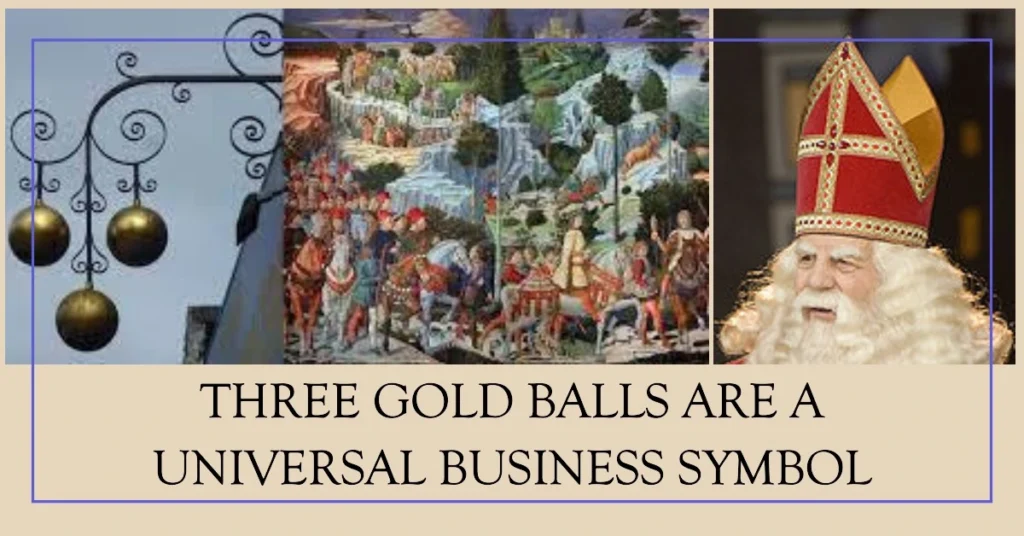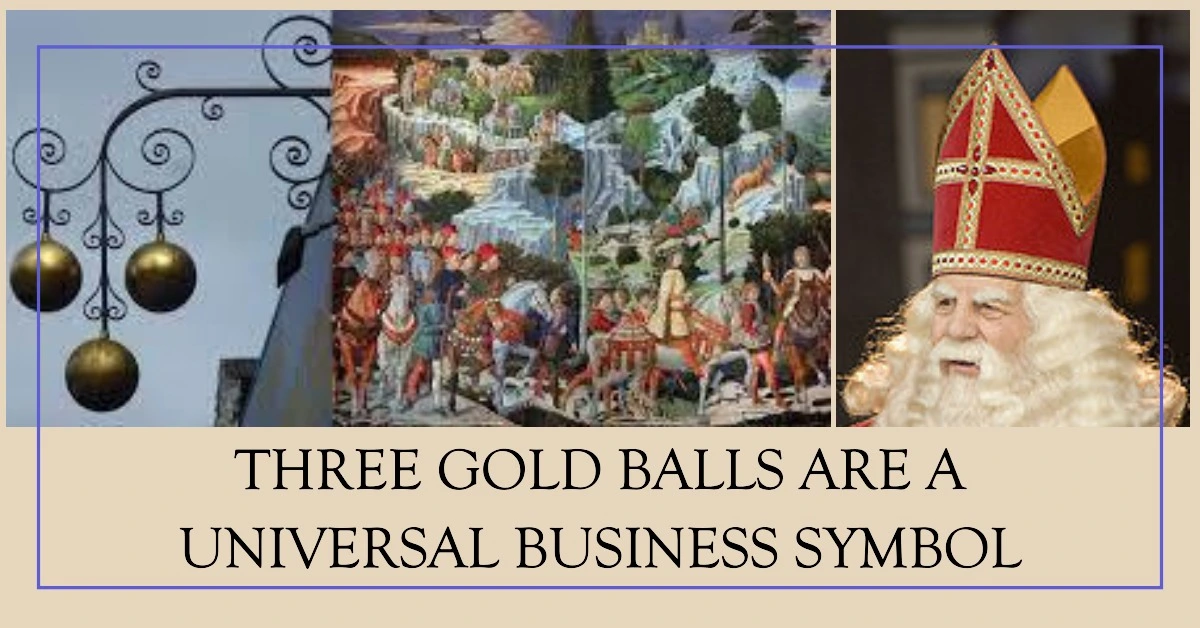When you spot the iconic three gold balls hanging above a shopfront, you are looking at a universal beacon for pawnbrokers. Three gold balls are a universal business symbol, as old as the trade itself, and have been a steadfast signpost for those seeking financial reprieve. Its roots are deeply planted in the soil of history, with ties to the Medici family of Florence and the Middle Ages, symbolizing a legacy of trust and monetary aid.
The heritage of the three spheres traces back many hundreds of years. Over time, the image has become universally synonymous with pawnbrokers and the unique financial services they provide. But how did this symbol become so intertwined with the pawn trade? Continue reading to learn more about the significance, history, and legacy of the three gold balls.
Meaning and Use of the Three Gold Balls Symbol
At the heart of every pawn shop lies the age-old symbol of three gold Balls A Universal Business Symbol. This emblem is not just a random choice, it’s a powerful signal to those in need of financial services.
The practice of displaying three balls originated in the 15th-century Italian banking families. Back then, wealthy banking families like the esteemed Medicis ran some of the first pawnbroking shops, where folks could temporarily swap belongings to get cash loans. The symbol has come to represent the core of pawnbroking: Collateral, Loans, and Interest Rates. It’s a beacon of hope for quick financial assistance, a tradition that has withstood the test of time.
Today, seeing those iconic balls still signals a pawn shop banking ready to assess personal goods and exchange cash for temporary item custody. The timeless emblem immediately tells passersby that appraisal services, collateral loans, and rates of interest are available.
Over the years, as pawnbroking spread far beyond Italy, every shop universally adopted the visual motif. Wherever the trade took root, the three spheres came to represent it. Now firmly ingrained as the signature image of pawn brokers worldwide, the shiny balls telegraph at a glance the lending and appraisal functions found inside. Their long-running symbolism remains a globally understood visual shorthand.
Origins and History of the Three Gold Balls
While strongly tied to pawnbroking today, the exact origins of the iconic three spheres remain uncertain, with various lively legends offering explanations.
One account points to Saint Nicholas providing three sacks of gold coins to aid a poor family in need. This charitable act supposedly evolved into artistic depictions of three gilded globes.
However, it was the influential Medici family in 15th-century Florence who truly propelled the balls into widespread use. As the Medicis accumulated immense wealth, accounts suggest they brazenly displayed three gold coins on their pawnbroking storefronts as a status symbol.

Others emulating their successful banking practices soon followed suit. As pawnbroking spread across Europe and beyond, every new shopholder adopted the symbolic spheres to identify their trade.
Despite hazy early beginnings, the three balls took firm hold as the universal mark of pawnbrokers in Europe and overseas. Wherever the trade prospered, the signature imagery came to represent it.
Over time, the globes became indelibly linked as the trusted identifying emblem of pawn brokers around the world. An ancient symbol was reborn as shorthand for the lending and appraisal establishments operating in cities worldwide.
The Symbol in Modern Times
While pawnbroking has declined, the three-ball emblem remains proudly displayed outside operational shops like Connecticut’s Hat City Pawn. They continue traditions dating back centuries.
Inside you will find specialists ready to assess and loan against items of value. The business activities evaluate jewelry, electronics, musical instruments and more to determine fair market prices. A segment of the total sum is borrowed, subject to a predetermined interest rate for the loan’s duration. Defaulting means forfeiture of the item.
If the borrower returns to repay the loan plus fees within the time frame, they can reclaim their possession. Otherwise, it becomes the property of the pawnbroker to resell and recoup their capital.
This business model has spanned eras. While some aspects evolved with regulations, the practice remains essentially the same. Assessing valuable items, exchanging loans at fixed rates, selling unclaimed goods – the fundamentals persist just as the three-balls emblem does.
Wherever the signature spheres are seen glowing bright, they signal that appraisals, collateral loans, and interest rates lie within. The three gold balls retain their rich meaning and history as the calling card of pawn shops through changing times. Their story connects the modern storefront back to medieval merchants and banking dynasties of old.

Bottom Line
In summary, the legacy of the iconic three gold balls is a universal business symbol and is a testament to the resilience of this ancient finance symbol. While its exact origins may be lost to time, its longevity is assured. For centuries, the spheres have uniquely signified the collateral lending and appraisal services of pawn shops worldwide.
Today, it continues to signify pawn shops and pawnbrokers globally, representing trust, reliability, and the age-old practice of lending against collateral.
Despite declines in traditional pawnbroking, owing to its symbolic meaning endures as a trusted globally-understood emblem. Their universality speaks to the primal simplicity of exchanging loans for valuables—a trade as old as commerce itself. Wherever the gleaming globes float, they connect modern storefronts to medieval roots, telling a timeless story of ingenuity spanning eras.

